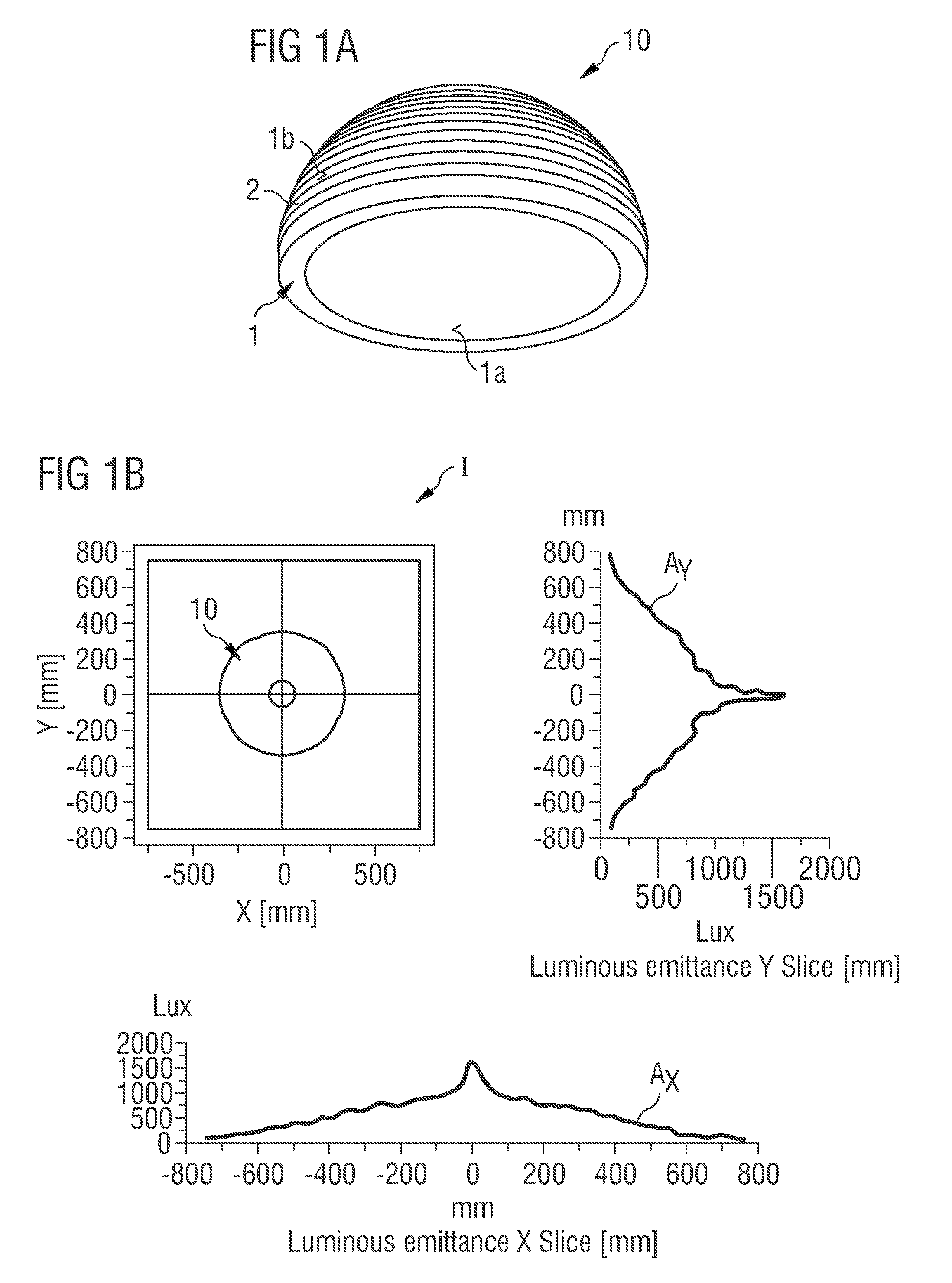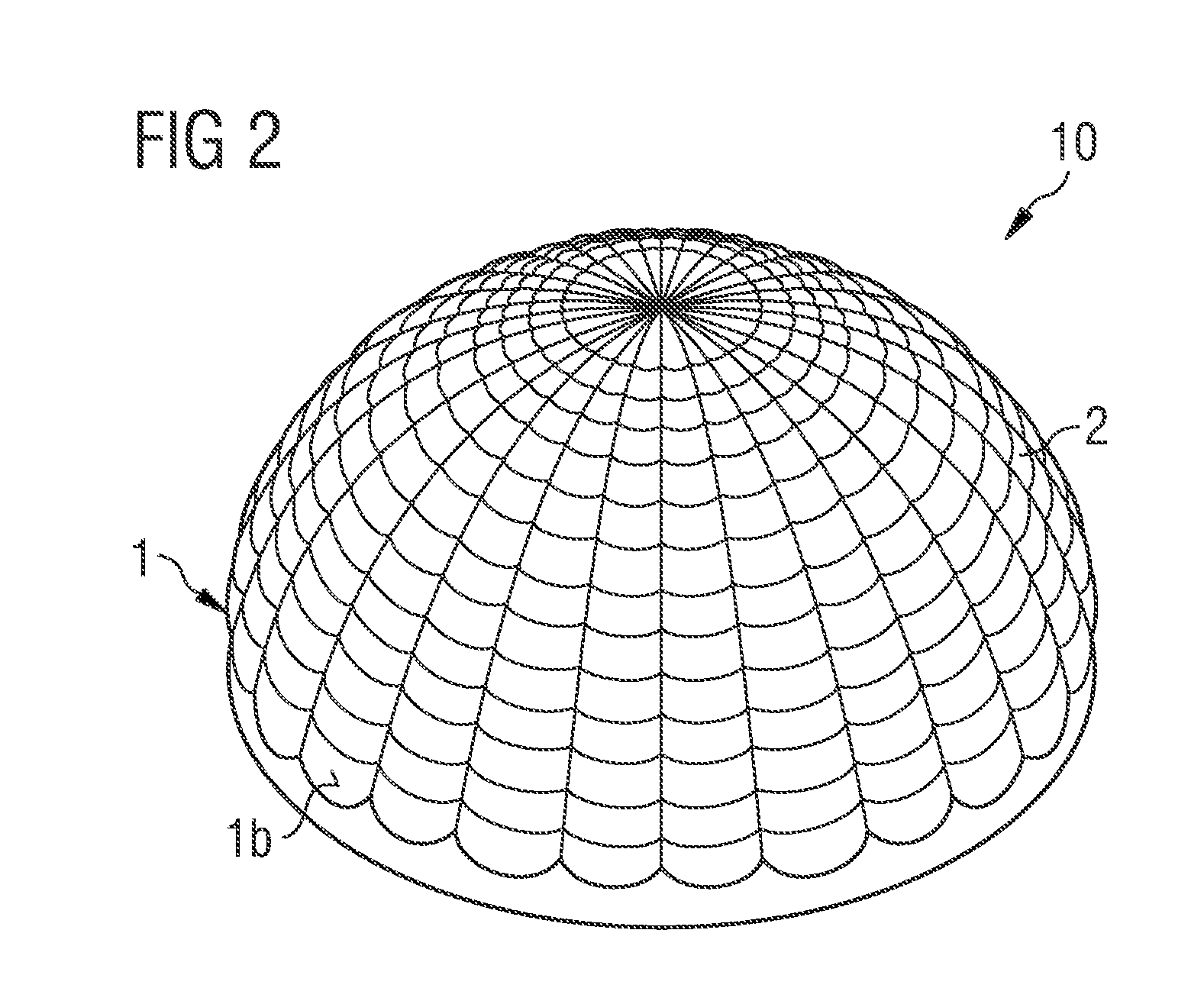Optical Element and Radiation-Emitting Device Comprising Such an Optical Element
a radiation-emitting device and optical element technology, which is applied in the direction of semiconductor devices for light sources, lighting and heating apparatus, instruments, etc., can solve the problems of large losses, non-homogeneous illumination, and reduced efficiency
- Summary
- Abstract
- Description
- Claims
- Application Information
AI Technical Summary
Benefits of technology
Problems solved by technology
Method used
Image
Examples
Embodiment Construction
[0050]FIG. 6A is a cross-section of a radiation-emitting device according to the prior art which comprises semiconductor components 3 which are arranged in a reflector 4. The semiconductor components 3 emit radiation when in operation, at least some of which is reflected on the reflector 4. Due to shading of the light emission at the opening of the reflector 4, shadows are here disadvantageously cast. Moreover, the beam of light may be split in accordance with the symmetry of the component arrangement.
[0051]It is known from the prior art to solve these problems by means of diffusers, which are, for example, arranged above the components (not shown). A disadvantage here, however, is that such arrangements cause major losses. It is alternatively known to improve the aperture of a secondary optical system downstream of the reflector by mounting three-dimensional structures, for example, teeth or films with transmission gradients (not shown). The high cost of mounting such teeth or film...
PUM
 Login to View More
Login to View More Abstract
Description
Claims
Application Information
 Login to View More
Login to View More - R&D
- Intellectual Property
- Life Sciences
- Materials
- Tech Scout
- Unparalleled Data Quality
- Higher Quality Content
- 60% Fewer Hallucinations
Browse by: Latest US Patents, China's latest patents, Technical Efficacy Thesaurus, Application Domain, Technology Topic, Popular Technical Reports.
© 2025 PatSnap. All rights reserved.Legal|Privacy policy|Modern Slavery Act Transparency Statement|Sitemap|About US| Contact US: help@patsnap.com



